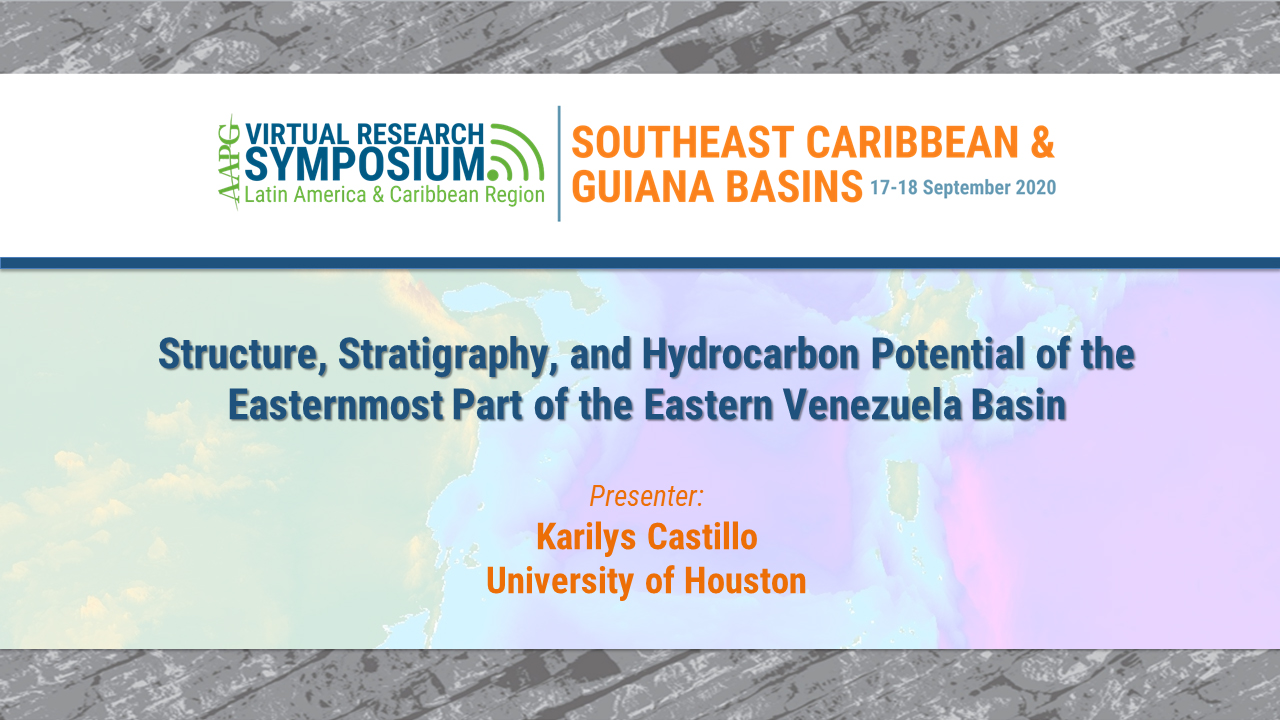
Summary
Author(s): Karilys Castillo (presenter), Paul Mann, University of Houston
The Eastern Venezuelan foreland basin (EVB) has been filling from the southwest by the Orinoco River since the late Miocene–early Pliocene. The easternmost part of the Eastern Venezuelan Basin (EEVB) became overfilled by clastic sedimentation since the Pliocene. The EEVB now consists of a 10 km thick delta system formed by the Orinoco River, which has spilled over the shelf edge onto the Atlantic margin of northeastern Venezuela. The Eastern Venezuelan foreland basin is the second largest hydrocarbon-producing basin in Venezuela with proven reserves of 36 billion barrels. To improve our understanding of the paleogeography and hydrocarbon potential of the EEVB, 620 km2 of 3-D seismic, 4000 km of 2-D seismic, and six wells with well logs were interpreted from the Punta Pescador area of the EEVB. We integrate the results from this study with the results of previous workers from the adjacent Orinoco Delta. Based on the integration of these data, the following sequence of Cenozoic events affecting the study area are proposed: (1) passive margin setting since the Cretaceous to Paleogene; (2) oblique collision of the Caribbean plate causing an underfilled, foreland basin stage that initiated during the late Oligocene; (3) during the Oligocene and early Miocene, south–north-flowing fluvial systems and associated deltas prograded northward and filled the foreland-basin-related depocenter; (4) late Miocene eustatic sea level lowering produced a major erosional surface and submarine canyons that allowed sediments to suddenly prograde eastward; and (5) early Pliocene to Holocene overfilling of the EEVB with eastward progradation of the Orinoco Delta into the Atlantic Ocean. Using the new information presented in this paper, several hydrocarbon prospects were identified within the clastic Miocene–Pliocene–Pleistocene sequence.
Bio:
Karilys del Carmen Castillo Flores, Occidental Petroleum, University of Houston
Karilys is a Geological Engineer from the Universidad Central de Venezuela, and earned a MSc in Geology from the University of Houston.
With 12 years of experience in the industry, she currently is Geophysicist at Occidental Petroleum at Houston, where she is responsible for international exploration geophysics. Her previous experience includes positions as Production Geologist and Seismic interpreter, Integrated Reservoir Studies, PDVSA (2005-2012); Geoscientist Intern ConocoPhillips (2013) and Anadarko Petroleum (2014); Research Assistant – CBTH at University of Houston (2012 – 2014); Geophysicist - International Exploration Colombia, Anadarko Petroleum (2014-2018); Geophysicist, Advanced Analytics and Emerging Technologies Team, Anadarko Petroleum (2018 – 2019); Geophysicist International Exploration Occidental Petroleum (2019 - Current). Karilys is a member of AAPG and SEG.
Please log in to view or purchase the video presentation